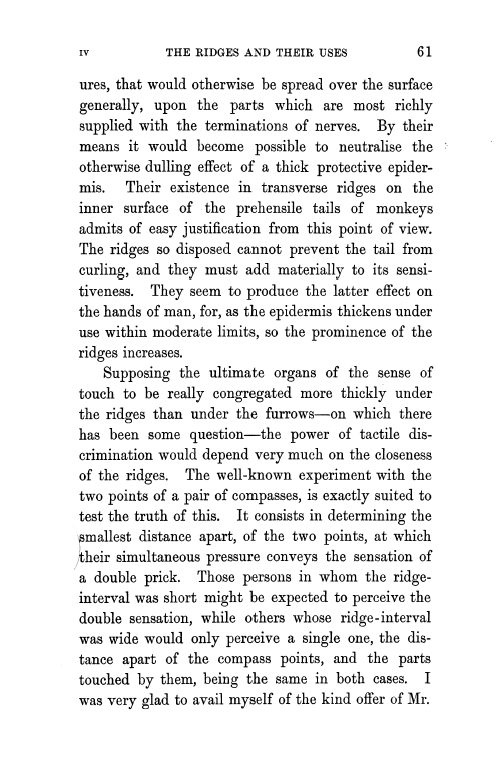iv THE RIDGES AND THEIR USES
61
ures, that would otherwise be spread over the surface generally, upon the parts which are most richly supplied with the terminations of nerves. By their means it would become possible to neutralise the otherwise dulling effect of a thick protective epidermis. Their existence in transverse ridges on the inner surface of the prehensile tails of monkeys admits of easy justification from this point of view. The ridges so disposed cannot prevent the tail from curling, and they must add materially to its sensitiveness. They seem to produce the latter effect on the hands of man, for, as the epidermis thickens under use within moderate limits, so the prominence of the ridges increases.
Supposing the ultimate organs of the sense of touch to be really congregated more thickly under the ridges than under the furrows on which there has been some question the power of tactile discrimination would depend very much on the closeness of the ridges. The well-known experiment with the two points of a pair of compasses, is exactly suited to test the truth of this. It consists in determining the mallest distance apart, of the two points, at which heir simultaneous pressure conveys the sensation of a double prick. Those persons in whom the ridgeinterval was short might be expected to perceive the double sensation, while others whose ridge-interval was wide would only perceive a single one, the distance apart of the compass points, and the parts touched by them, being the same in both cases. I was very glad to avail myself of the kind offer of Mr.
